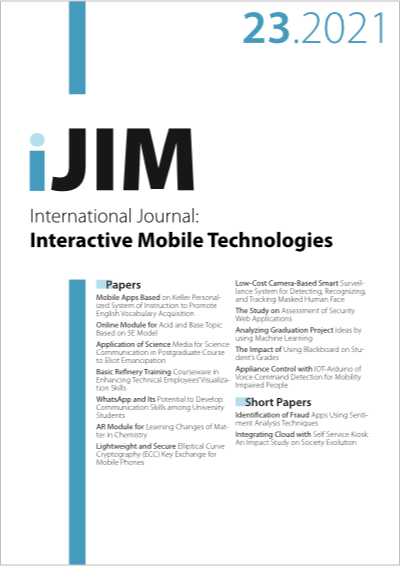Analyzing Graduation Project Ideas by using Machine Learning
DOI:
https://doi.org/10.3991/ijim.v15i23.27707Keywords:
Machine Learning, Text Classification, System Analyze, Graduation ProjectAbstract
The graduation projects (GP) are important because it reflects the academic profile and achievement of the students. For many years’ graduation projects are done by the information technology department students. Most of these projects have great value, and some were published in scientific journals and international conferences. However, these projects are stored in an archive room haphazardly and there is a very small part of it is a set of electronic PDF files stored on hard disk, which wastes time and effort and cannot benefit from it. However, there is no system to classify and store these projects in a good way that can benefit from them. In this paper, we reviewed some of the best machine learning algorithms to classify text “graduation projects”, support vector machine (SVM) algorithm, logistic regression (LR) algorithm, random forest (RF) algorithm, which can deal with an extremely small amount of dataset after comparing these algorithms based on accuracy. We choose the SVM algorithm to classify the projects. Besides, we will mention how to deal with a super small dataset and solve this problem.
Downloads
Published
2021-12-08
How to Cite
Alharbi, H. A., Alshaya, H. I., Alsheail, M. M., & Koujan, M. H. (2021). Analyzing Graduation Project Ideas by using Machine Learning. International Journal of Interactive Mobile Technologies (iJIM), 15(23), pp. 136–147. https://doi.org/10.3991/ijim.v15i23.27707
Issue
Section
Papers
License
Copyright (c) 2021 Hajar A. Alharbi, Hessa I. Alshaya, Meshaiel M. Alsheail, Mukhlisah H. Koujan

This work is licensed under a Creative Commons Attribution 4.0 International License.



